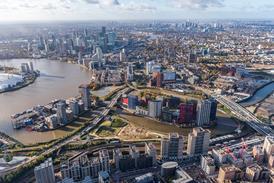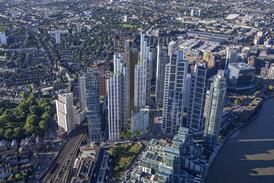The rise of a homogenising corporate urbanism is creating places that increasingly look the same, writes Hien Nguyen

Dropped randomly in a newly developed district of any city, you would find it increasingly difficult to establish your location solely from the buildings surrounding you. From Doha to Dublin, a global corporate architecture has come to represent ‘new development’.
This trend has even made it to Cambridge, where Michael Gove has given the go ahead for 425 flats along with five commercial buildings in Cambridge North.
It’s clear we live in a time where urban landscapes increasingly mirror each other with standardised commercial and corporate architecture. It’s easier, less risky and more cost efficient. But what of heritage, identity and preservation of culture? How do we – and should we — work to maintain a sense of place amidst the tide of globalisation?
At the root of this discussion lies the tension between uniformity and authenticity.
On one hand, there is an increasing proliferation of ‘global’ architectural designs that reflects the interconnectedness of the modern world. Global corporations and developers seek familiarity and efficiency in their constructions, resulting in structures in Cambridge that may bear resemblance to those in London, Birmingham or other international cities.
You can argue that such designs signify progress and modernity, positioning cities like Cambridge as hubs of innovation and economic vitality. Developments such as Cambridge North are rightly praised for ticking all the right boxes – creating new jobs, potentially alleviating some of the local housing pressure, and improving infrastructure amongst others.
While it is positive to see places such as Cambridge North coming forward as a development of a ‘forgotten’ part of the city, why do all the images convey a standard corporate architecture that could be anywhere? What makes it Cambridge? Or in a global network, does it matter?
The trend towards architectural homogenisation poses a threat to the unique character and heritage of local communities. Cambridge, like any city, boasts its own distinct architectural identity. As the city expands, there is a palpable fear that its charm and character will be eclipsed by commercial priorities.
Contextualism means moving beyond generic corporate architecture and instead crafting developments that resonate with the city’s unique character
Where savings are to be found from rolling out modern designs which may be cost effective and hopefully adhere to strict sustainability principles, what value is left on the table by moving away from place-based contextual identity?
The issue is not just an aesthetic one. It encompasses broader questions of cultural preservation, landscape and community identity. Architecture works to reflect a city’s ethos, reflecting its values, history, and aspirations. Prioritising corporate over character risks diluting the cultural fabric that makes Cambridge — and any city — unique.
Cambridge is a city of both cutting edge, future-thinking research, and rich history and tradition. Because of this, designing with sensitivity to the local parameters involves engaging with the surrounding landscape and urban fabric. Nestled alongside the picturesque River Cam and lush meadows, some of the most successful parts have a seamless ‘thread of green’ running through their heart that caters for people and nature while solving technical issues such as flood risk mitigation.
Preserving view corridors, creating public spaces that connect seamlessly with the riverfront, and maintaining a human and ecological scale that respects the intimacy of the place are crucial considerations. This ‘green infrastructure’ is essential for residents of expanding communities like Cambridge North to live happy, healthy lives.
Beyond physical aspects, contextualism also encompasses social and cultural dimensions. Understanding the needs and aspirations of different communities is essential to creating inclusive and vibrant urban environments.
Incorporating spaces for communal gathering and cultural expression, providing affordable housing options that reflect the socio-economic diversity of the city, and creating opportunities for local businesses and artisans to thrive, all contribute to a sense of belonging and identity.
Developments like Cambridge North need to balance global influence with local identity. Contextualism means moving beyond generic corporate architecture and instead crafting developments that resonate with the city’s unique character, values and aspirations.
By doing so, Cambridge can continue to evolve as a global hub of innovation and excellence while remaining steadfast in its commitment to preserving the essence of what makes it truly special.
>> Also read: If Cambridge is to have a development corporation, then it must deliver for the public good
>> Also read: Is the lack of ornament in architecture a barrier to diversity?
Postscript
Hien Nguyen is associate director at MCW Architects
















No comments yet